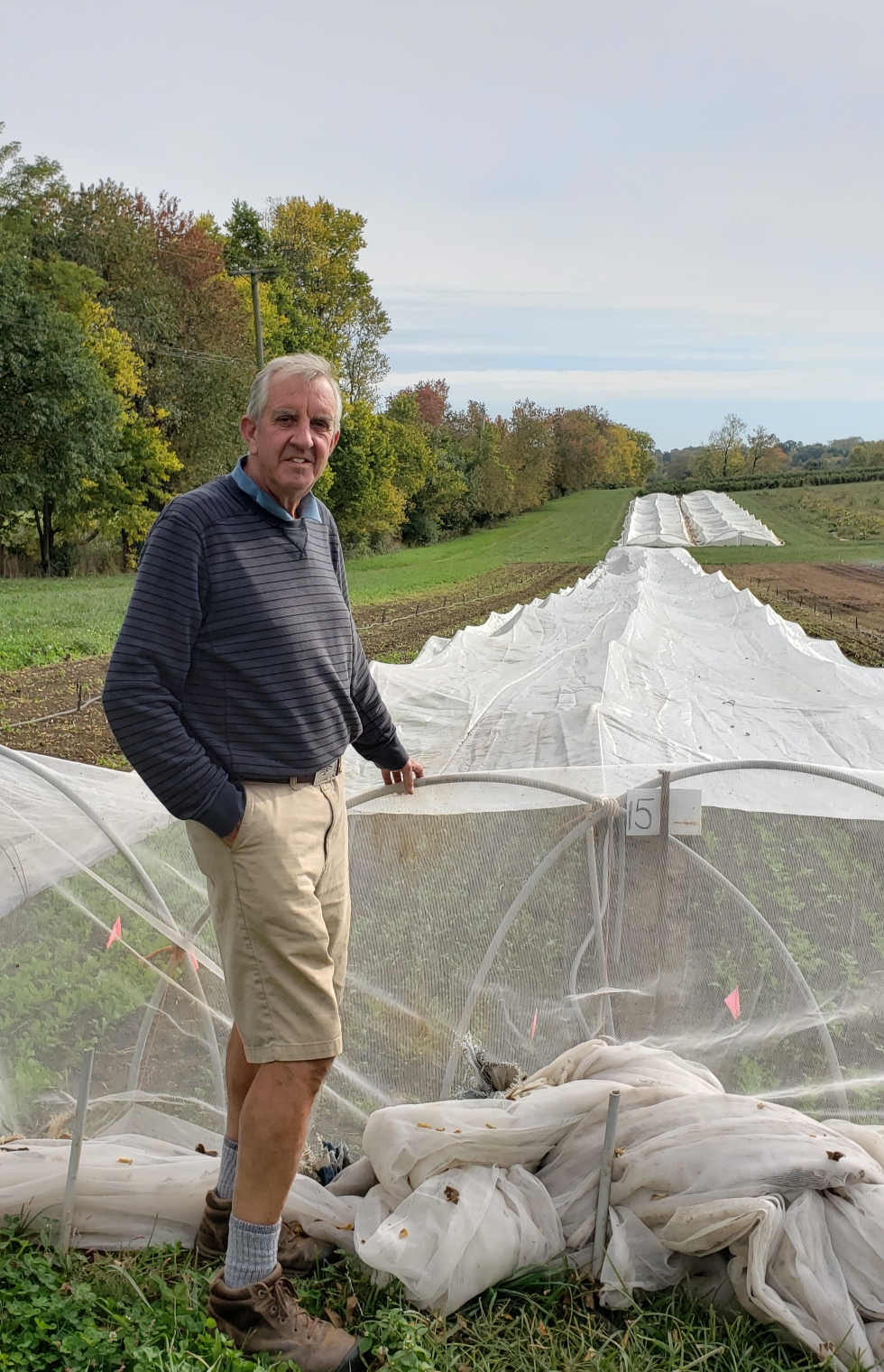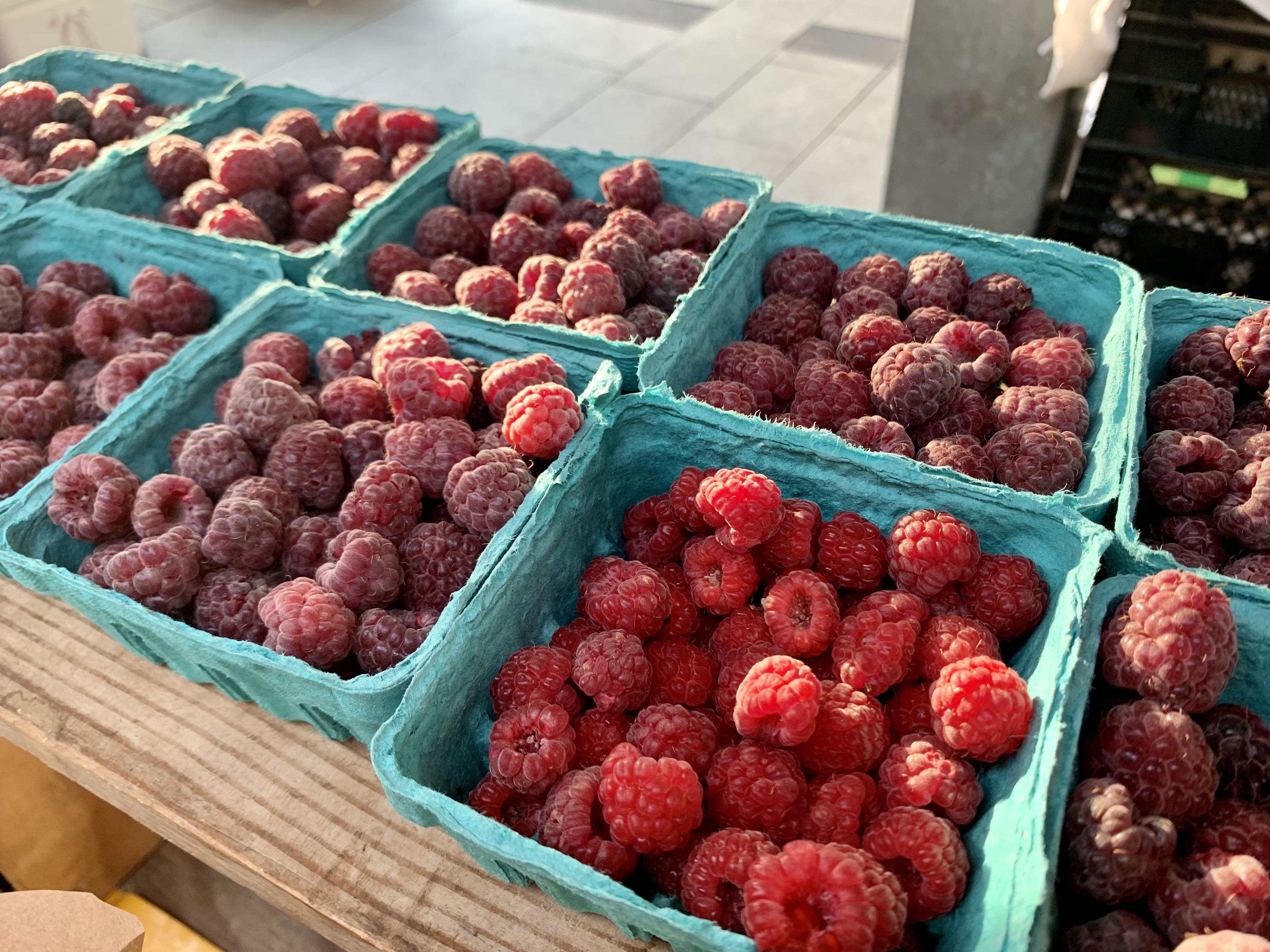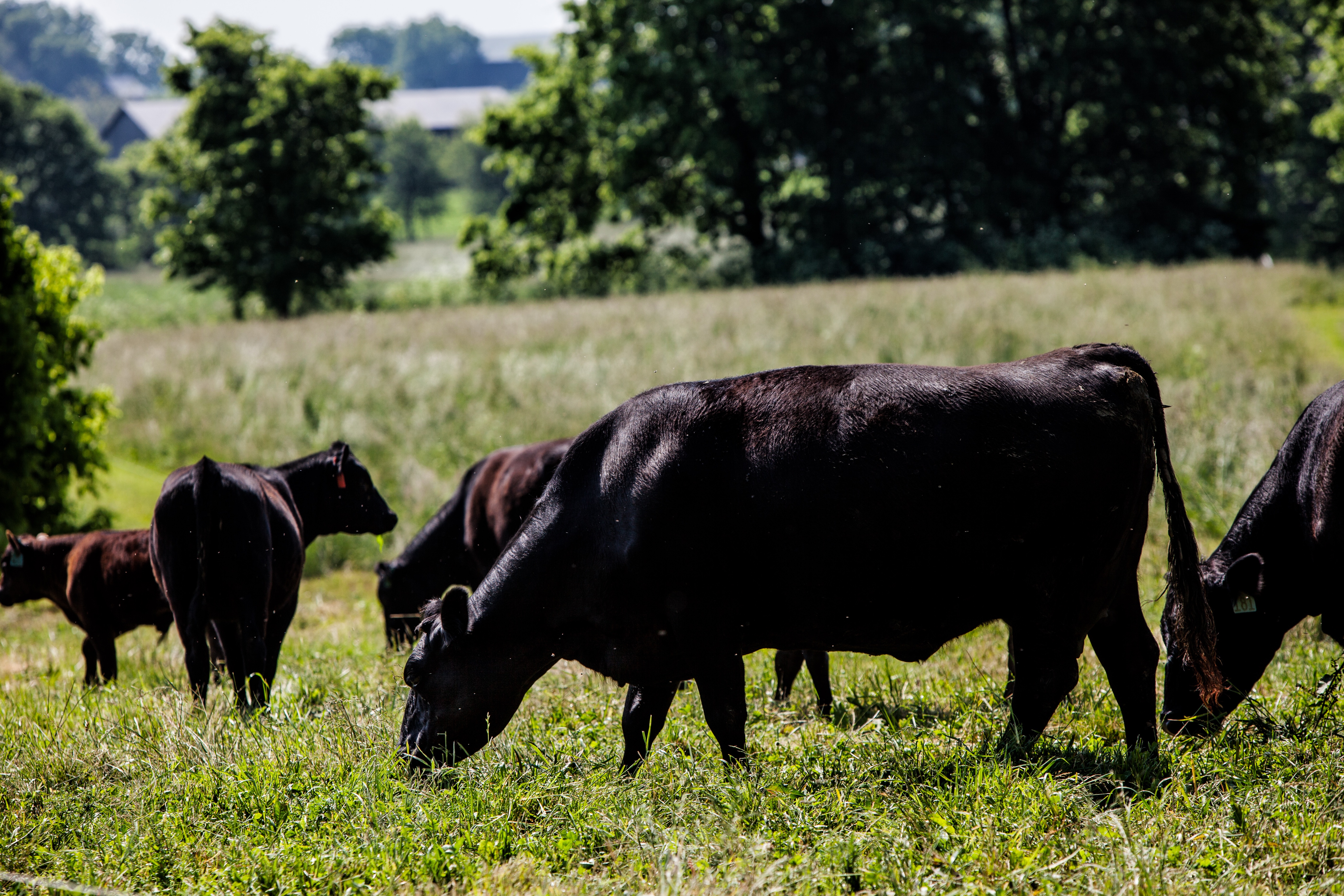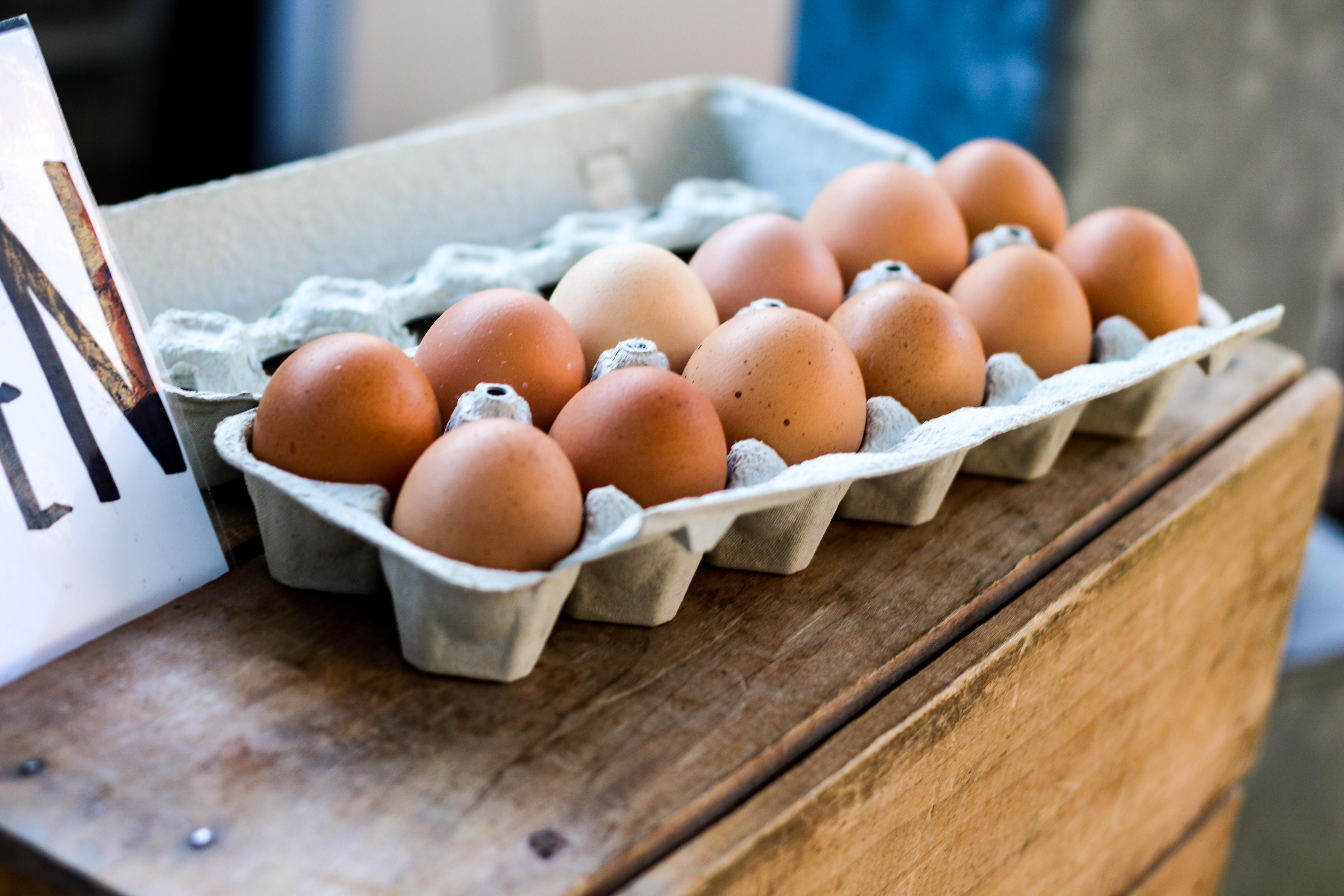
By: Mac Stone, Farmer & Owner, Elmwood Stock Farm
Pour a glass of juice. Fry an egg or two, shell out half an avocado on top, and maybe slide a grilled sausage patty under it. Put some granola in a small bowl with some berries capped off with a healthy dollop of yogurt, and call it breakfast. I do.
Now just for kicks, divide whatever it is you call breakfast into two equal portions. Consider the servings on the right, in the green bowls, to have the USDA Organic seal of authenticity. The ones on the left, in the brown bowls, came to you via the vast conventional industrial-food complex. Appearance is the only thing these two meals have in common. There is nothing equal about them.
Spraying toxic chemicals, like insecticides and fungicides, on food is on my resume. This is a hard thing to admit but an important step in my life’s organic evolution. My remembrance of the skull and crossbones on the product label, the putrid smell wafting through the respirator, and watching the material drying on the leaves and fruits as I walked the rows leaves me with trouble opening wide for a spoonful of berries that did not come from a certified organic farm. While I’m less anxious about toxin residue on the grains in the granola (that might be misguided), I visualize a 90-foot spray boom traversing waves of grain, fogging the Midwest, just for me. Organic granola may cost a little more, but it sure is more appetizing.
Be it for the glass of orange juice or the avocado—I have never grown either—the list of topical chemicals approved, allowed and even recommended by university scientists is extensive, beyond your wildest imagination. The list of allowed pest-control measures for organic farms is short—very short—with no brand names given, and vetted by a group of people who care about public health and the environment.

The yogurt in your bowl can either come from cows that live on a concrete pad and eat genetically modified grains for a couple of years before they burn out, or your organic dairy products can come from cows that eat grass every day and ruminate in a pasture for a decade or more. On those confinement farms, pigs and egg-laying chickens are housed in confinement crates and cages, respectively. The farmers are not bad people, rather the artificially cheap food market is forcing them to make decisions that keeps them on the treadmill of food as a commodity. Still, I don’t want to subsidize these systems with my food dollar.
So, if the breakfast on your left and the breakfast on your right look alike, how can you be assured the organic one is produced according to your own food values? How do you know the chickens roamed around, the cows actually ate grass, and no toxic chemicals were released into the environment on your behalf? As certified organic farmers, we annually submit to the Kentucky Department of Agriculture an Organic System Plan: a packet of production records for each thing we sell, along with receipts and certificates of organic-standards compliance for every input we purchase, how much we grow, and where we sell it all. KDA, and other certifying agencies around the world, goes through a grueling accreditation process with the US Department of Agriculture to be authorized to administer the National Organic Program.

KDA sends out an inspector to the farm on short notice to delve deeper into our farm records, look around to see we have the facilities and wherewithal to uphold the required animal-welfare standards, see the crops, observe how we use cleaners and sanitizers, and watch for potential sources of contamination. They report back to KDA to say we passed the white-glove test, sometimes indicating where we can tighten up a bit, and then KDA issues us our USDA organic certificate. Then, and only then, can we use the organic symbol on our marketing materials.
If a farm or food business were to falsify or misrepresent their USDA organic status, they are levied an $11,000 fine, per infraction. For our farm, that would be $11,000 for the Saturday farmers market and $11,000 for the Sunday farmers market, and $11,000 more for Monday’s CSA Farm Share distribution … you get the picture.
The certifying agency’s inspector can show up to the farm anytime, un-announced, to see if we are following our plan and to take samples for residue testing. We welcome this scrutiny, since we have nothing to hide. While organizing all the documentation is a pain, most of it is good business management anyway. Having this third-party verification is worth the hassle because it helps us cut to the chase in our messaging: We are militant about organic so you can eat in peace.

My stint as the chair of the National Organic Standards Board put me in position to vote thumbs up or thumbs down on what is allowed and what is not allowed in “organic” production and how scrutinizing the certification process should be. Here are two common concerns:
- When you hear pesticides are allowed on organic farms, this is true. Lots of things can kill insects and mold spores, including compounds found in nature. That is part of the natural balance of things. Some of these things have been harvested, even cultured, for use on farms. No synthetic or potentially hazardous carriers, known as inerts, are used. There are only a handful of these naturally occurring pesticides, and it’s a tenet of organic farming to reach for organic-approved pesticides as a last resort.
- Ingredient panels on processed organic foods have some strange-sounding words on them. The FDA has approved thousands of processing aids and food additives for use in human food. These may be for flow in the factory, or mouth appeal, or as a drying agent, or to add color, or for whatever Americans want their food to be like. Not all ingredients with complicated names are synthetic or harmful.

So when you see the organic seal on a product at Good Foods, the integrity behind it is extensive and thorough. The NOSB-member citizen scientists act on your behalf and vote to uphold the food values you hold dear. It matters how animals are treated, how the land is treated, and whether actions and additives are scientifically justified. The more of us eating organic foods, the more organic foods there will be. More farmers will stop spraying bad things because the market will fairly compensate them for going organic.
Now, look at the green and brown bowls before you. Go left, and you eat against the animals, the environment, and your longevity. Go right, and animal husbandry reigns supreme, the farms are self-regenerating food powerhouses, and the food is actually good for you, plus it tastes damn good. Before you even leave your house each morning, your breakfast has impacted your personal health and your personal carbon footprint. This doesn’t stop at breakfast.
—Mac Stone, Elmwood Stock Farm
